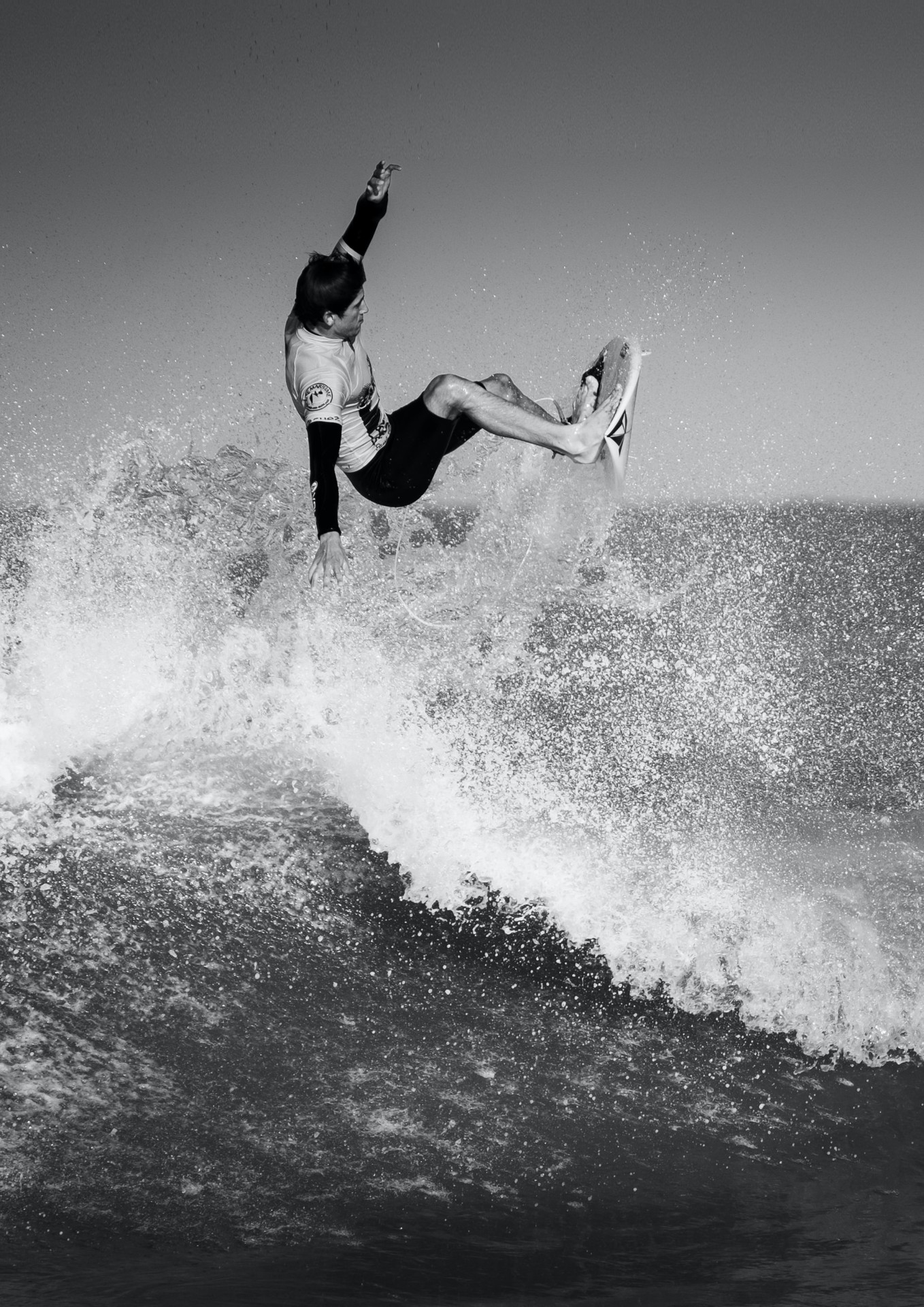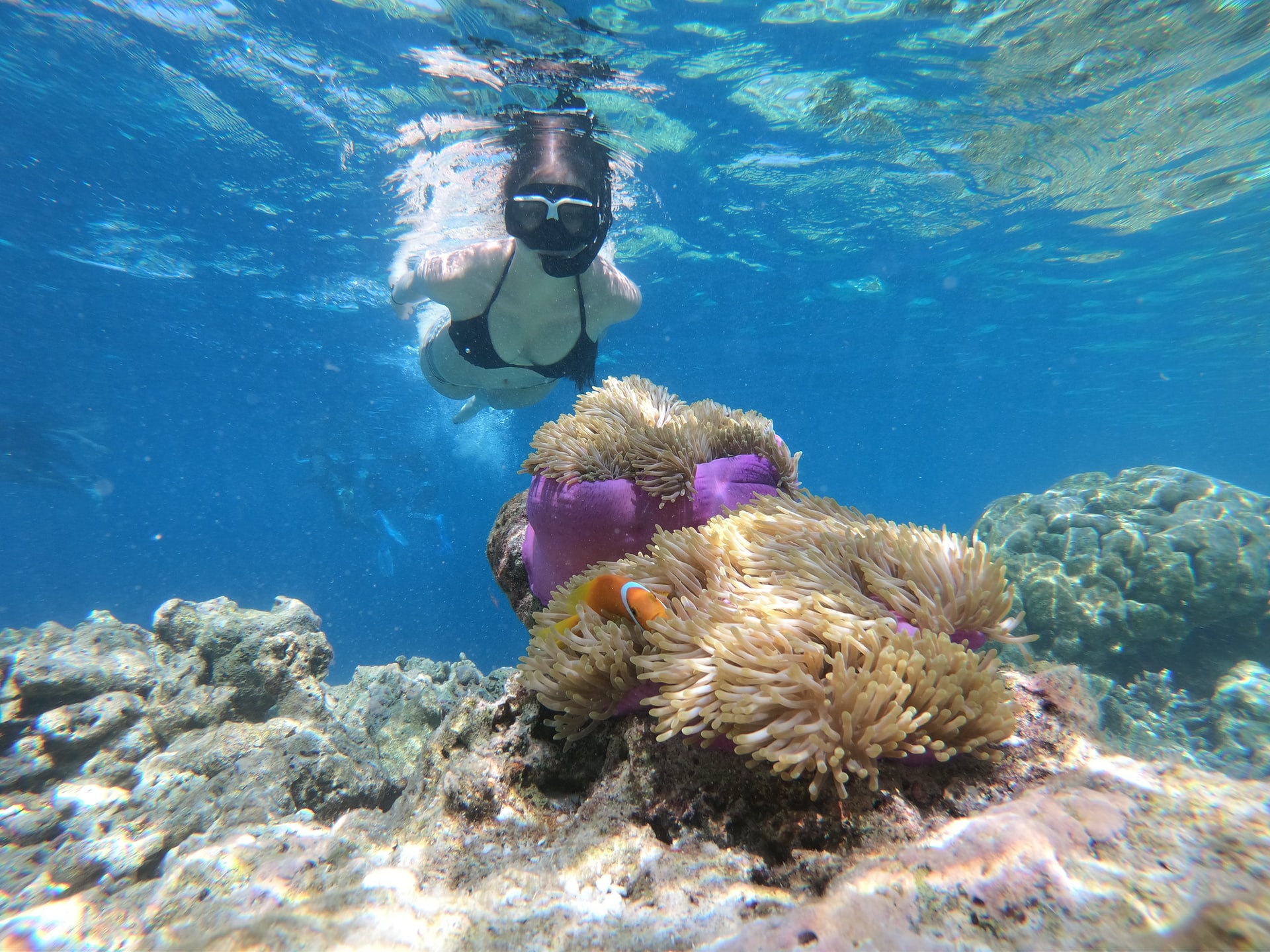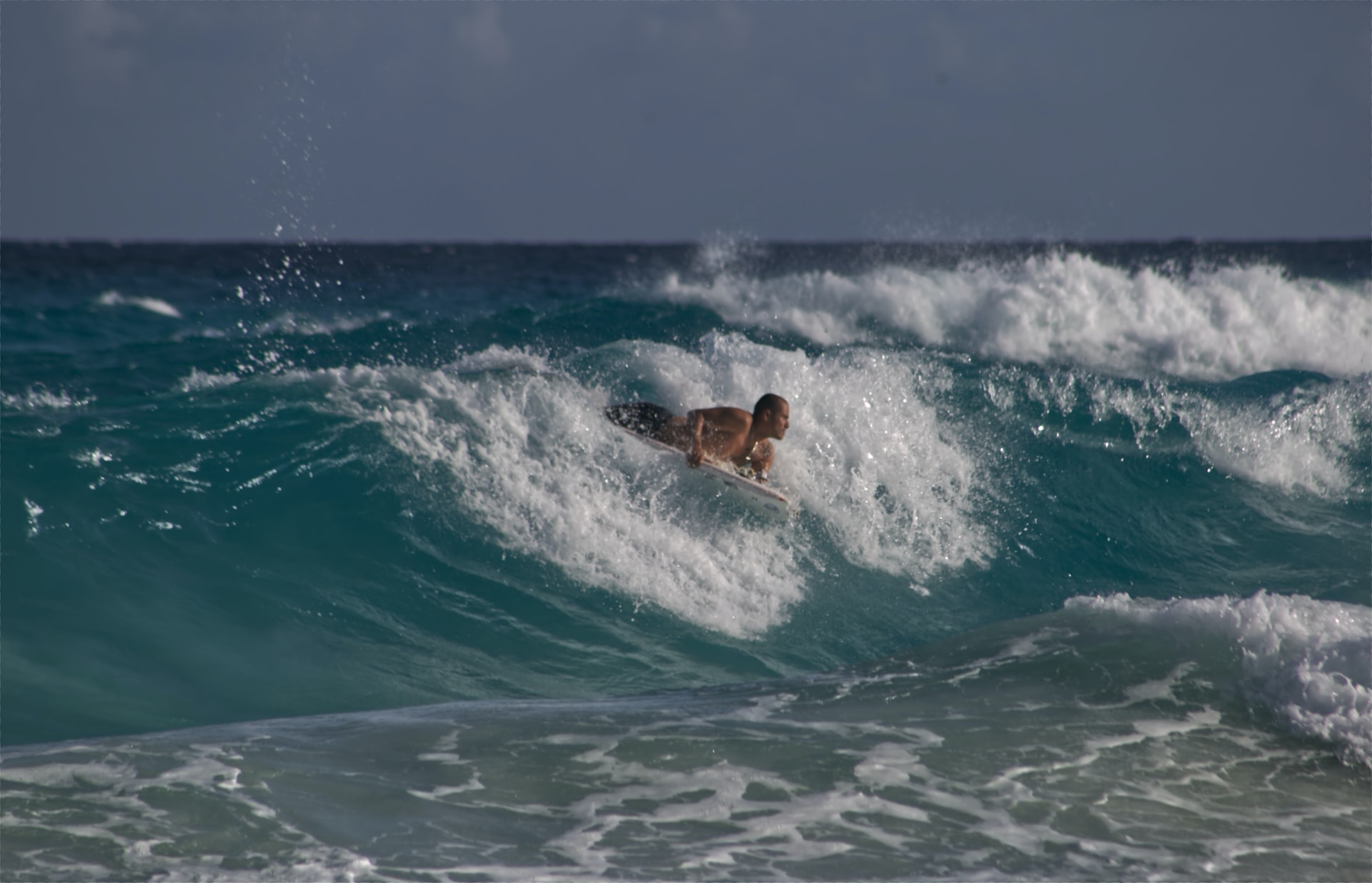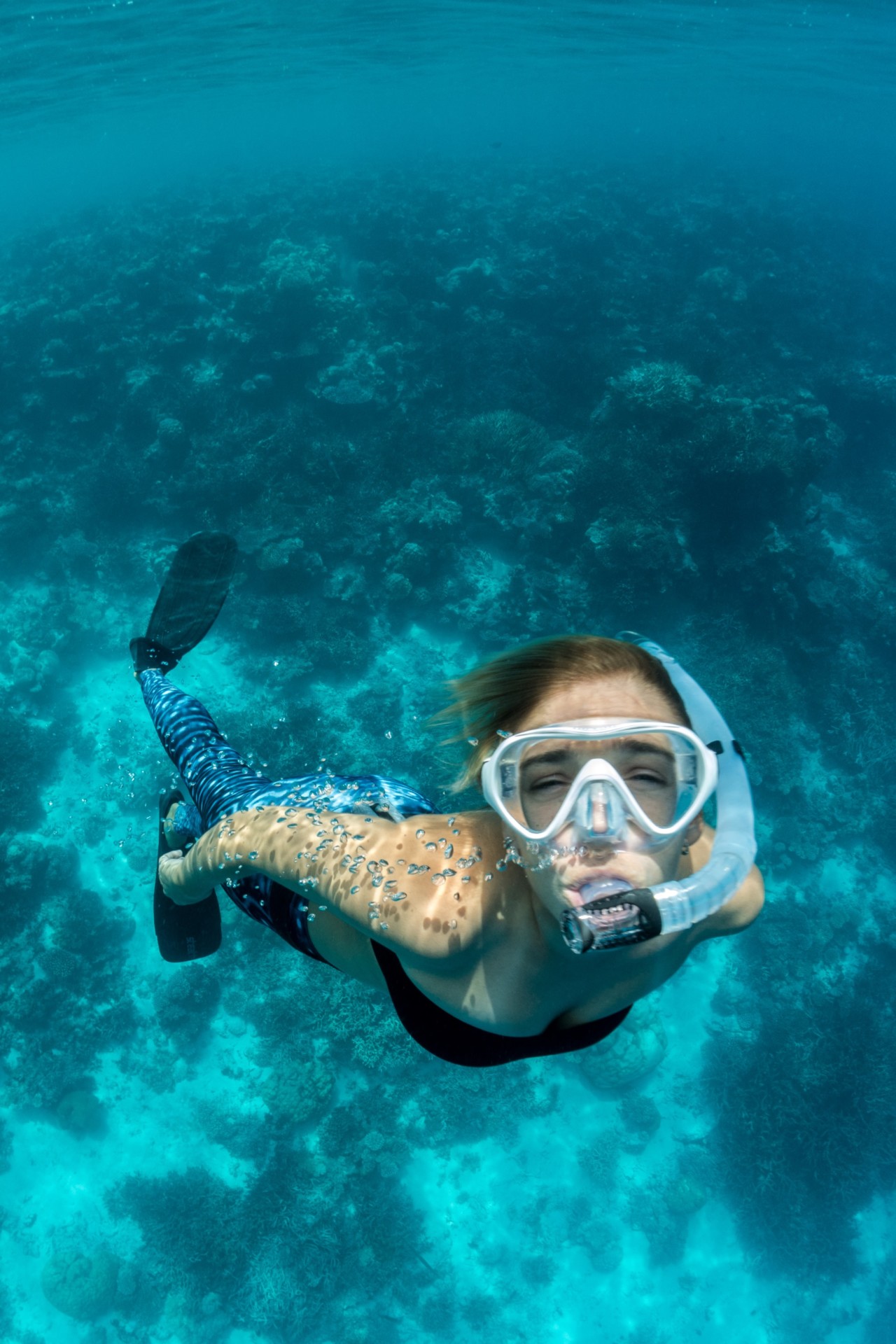Have you ever spent time watching surfers carve the waves and perform aerials while remaining glued to their board?
Water makes smooth surfaces slippery, so how do they do this?
Keeping your feet on your surfboard comes down to adding friction to the board’s surface through wax or trackpads, and a few simple rules of physics.
When performing aerial tricks, it is the momentum of the board that keeps it close to your feet, similar to performing tricks on a skateboard.
Below we will discuss some of the fundamentals of staying with your board while surfing.
- Are Surfers Attached to Their Boards?
- Wouldn’t Surfing With Foot Straps Be Easier?
- Are Surfboards Somehow Sticky?
- How Do You Not Slip off a Surfboard?
- Does Your Surfing Stance Play a Role?
- How Can Surfers Jump Without Losing Their Board?
- How Do Surfers Not Lose Their Board?
- When Do Even Good Surfers Lose Their Boards?
- 5 Tips to Stay on Your Board
- Conclusion
- You Might Also Like…
Are Surfers Attached to Their Boards?
Surfers are not attached to their boards in a fixed position, but in a sense are attached by a simple rule of physics.
You will very likely have heard of Sir Isaac Newton, an English mathematician commonly known for his “discovery” of gravity by observing a falling apple.
Newton, through his time, made various observations relating to gravity and motion.
One of these observations which come into play here is known as Newton’s third law of motion which states:
“If object A exerts a force on object B, object B also exerts an equal and opposite force on object A.”
Or simply put: For every force, there is an equal opposite force.
So how does this apply to surfing, and why does this attach a surfer to their board?
Weight, which is your mass multiplied by the “pull” of gravity, is equal to the force exerted on an object. That object will then give off the same force but in the opposite direction.
Force = mass x acceleration (F = m * a)
Sounds confusing? Let’s simplify it.
Assuming the mass of the surfer is 70kg, and given the gravitational acceleration is roughly 9.8m/s², we can see this in practice.
Note: Force is measured in Newton (N) and has a direction, with 1 N being the force which gives a 1 kg mass an acceleration of 1 m/s².
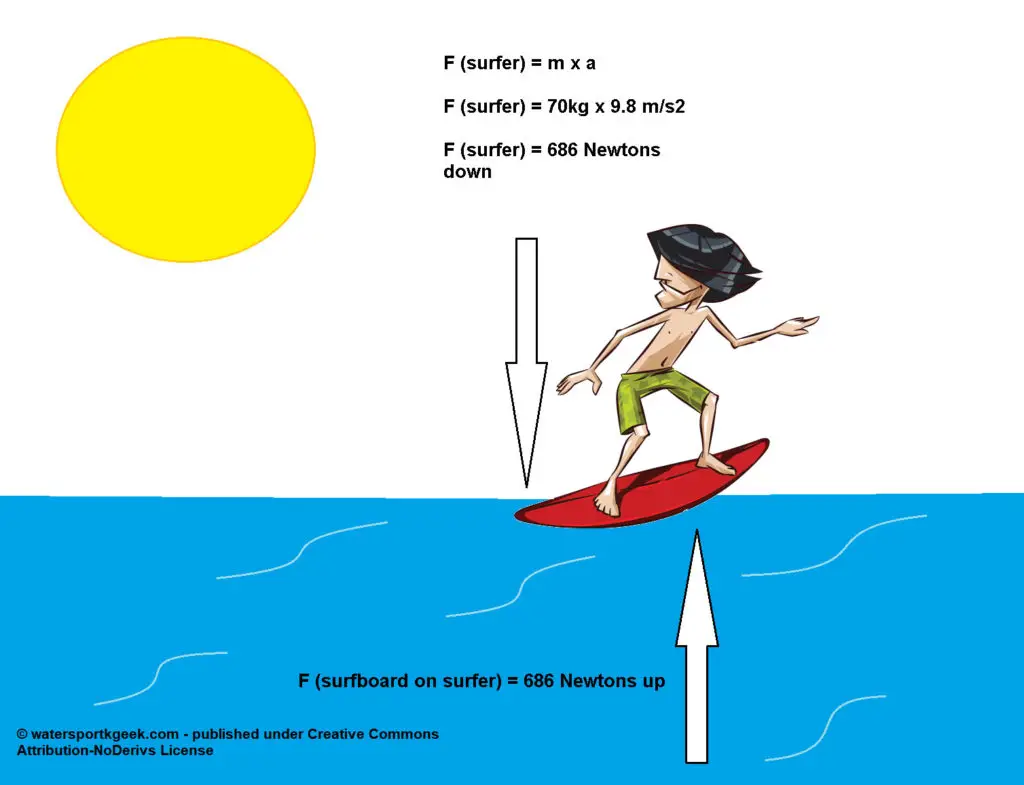
According to Newton’s formula, the surfer’s feet exert 686 N of force on their surfboard, and in response, the surfboard exerts the same force, but against the surfer’s feet.
This opposing force sticks the board to the feet of the surfer.
This works in the same way as holding onto something. The harder you grip (the more force you exert) the more secure the object is.
In conclusion: A surfer’s feet are not attached to their surfboard by any physical device, but rather due to an exerted force.
Wouldn’t Surfing With Foot Straps Be Easier?
After thinking about all the science behind staying on your surfboard it would seem that using foot straps such as those used while wakeboarding or windsurfing would be a smarter choice.
After all, surfing and wakeboarding have many similarities.
The reason surfboards do not use foot straps is because of the sports requirement of dynamic body positioning.
Moving from a paddling position to a standing position will be difficult if you were wearing foot straps.
Firstly it would be uncomfortable to lie on the straps while paddling, secondly, the fast pop-up maneuver would not allow time to get your feet into the straps.
And lastly, surfing often requires you to move your feet around the board to perform different tricks.
This would not be possible if your feet were secured to the surfboard.
Are Surfboards Somehow Sticky?
Surfboards are not sticky. In fact, they are smooth, and when wet they become extremely slippery.
Because (most) surfboards are made from fiberglass, their surfaces do not create much friction.
This is important since the more friction your board creates, the slower it will travel in the water. However, this design can create a problem when trying to stand on a surfboard.
If the surface of your surfboard is smooth it will provide little to no grip, and therefore make it difficult to remain standing on, similar to trying to stand on ice.
How Do You Not Slip off a Surfboard?
In order to decrease the slippery surface of your surfboard, one of two things are used: Surf wax, or trackpads.
In short, surf wax usually comprises of beeswax or other hard waxes, paraffin, and in softer waxes, petroleum jelly.
Trackpads are generally rigid rubber pads that cover the rare or entire surface of the board.
Both trackpads and surf wax work to increase the surface area that your foot touches, and therefore lead to more friction.
Increased friction leads to a less slippery surface.
Does Your Surfing Stance Play a Role?
The stance you adopt while learning to surf will likely shape the way you surf for the rest of your life.
Your surfing stance plays a massive role in remaining standing on your board, which is why many new surfers choose to take surfing lessons.
Apart from gravity and the wax on your board, the correct distribution of weight on your board is important.
Remaining balanced and standing on your surfboard comes down to your center of gravity, as well as your foot position.
How Can Surfers Jump Without Losing Their Board?
It is all good and well to use gravity, wax, and your feet positioning when standing on your surfboard, but do the same concepts remain true when in the air?
Although all of the above points remain relevant when making air on a surfboard, there are two main factors that make sure surfers do not lose their boards: Momentum (inertia) and the use of our hands.
Momentum
Coming back to Newton and his laws of motion, Newton’s first law of motion (known as inertia) states:
“An object at rest remains at rest, and an object in motion remains in motion at a constant speed and in a straight line unless acted on by an unbalanced force.”
How does this relate to making air on a surfboard?
When your board is traveling at speed and you hit the lip of a wave, the board’s direction begins to travel upward.
This momentum continues to travel “upwards” against your feet even after you have left the water.
Use of Hands
Similar to skateboarding, the inertia of your board will help, but the momentum will slowly decrease and your board will eventually fall.
This is common when hitting large jumps on a skateboard, or when performing spinning aerials on a surfboard.
To counteract this, it is common for surfers to grab onto the rail of their board in order to keep it close to their feet.
How Do Surfers Not Lose Their Board?
It is one thing to remain with your board while standing up or while paddling past the break.
It is much more challenging when falling off your board to keep it under your control.
The leash is a cord, usually attached to the tail of your board and your ankle.
The leash has only one purpose: to make sure your board does not float too far away from you when you bail.
Although your leash will make sure your board does not float back to shore without you, it plays no role in keeping your feet on the board.
When Do Even Good Surfers Lose Their Boards?
Everyone falls off their board at some stage, and everyone will eventually learn what it is like to lose their board in the water.
This can happen to even the best surfers when they are surfing in a new location, practicing new tricks, or in the case that the swell is particularly large.
Whether it is losing your board because your leash snapped, or simply falling off your board, know that you are not alone.
As you can see above, even the world’s number one surfer John John Florence falls victim to bad body positioning and the occasional wipeout.
5 Tips to Stay on Your Board
If you are struggling to keep yourself attached to your surfboard, or if you are simply looking for some extra advice, the following tips may help.
1. Correct Foot Position
Placing your feet in the correct position on your board will help you distribute your weight.
If your feet are too far towards the rails you will find your board constantly tipping over.
Similarly, if you keep your feet too close together then you will find it hard to balance.
2. Center of Gravity
Maintaining a low center of gravity is the next step in increasing your connection with your board.
Bending your knees lowers your weight and evenly distributes it in the center of your board.
This will make balancing easier as you will be less likely to over-correct when you feel off-balanced.
3. Wax Your Board
Never forget to wax your board, unless you have a trackpad that covers the entire upper surface.
Without wax, it is near impossible to remain standing on your board. It is important to always wax your board correctly.
Too much wax can be just as problematic as not enough.
4. Use the Correct Wax
Using the correct wax for the conditions you are surfing in will make a big difference in how well the wax works.
Wax is broken into three main categories: Base coat, cold water, and warm water wax.
These are further broken down into smaller temperature ranges.
A base coat should always be used, followed by 1 – 2 layers of the wax that best suits the temperature of the water you will be surfing in.
5. Buy a High-Quality Leash
Although not directly related to staying on your board, using a high-quality leash will make all the difference, especially when in larger or rough surf.
In this case, it is worth spending a few extra dollars on quality.
It may be the difference between an enjoyable surf or a 500m swim back to the shore in 10ft swell.
Conclusion
Surfers keep their feet on their board with a combination of friction between their feet and the board, momentum, gravity, and a good stance.
Some of these are readily available to you, such as gravity, others such as wax can be applied, but some, such as a strong surf stance will need to be practiced and mastered.
You Might Also Like…
-
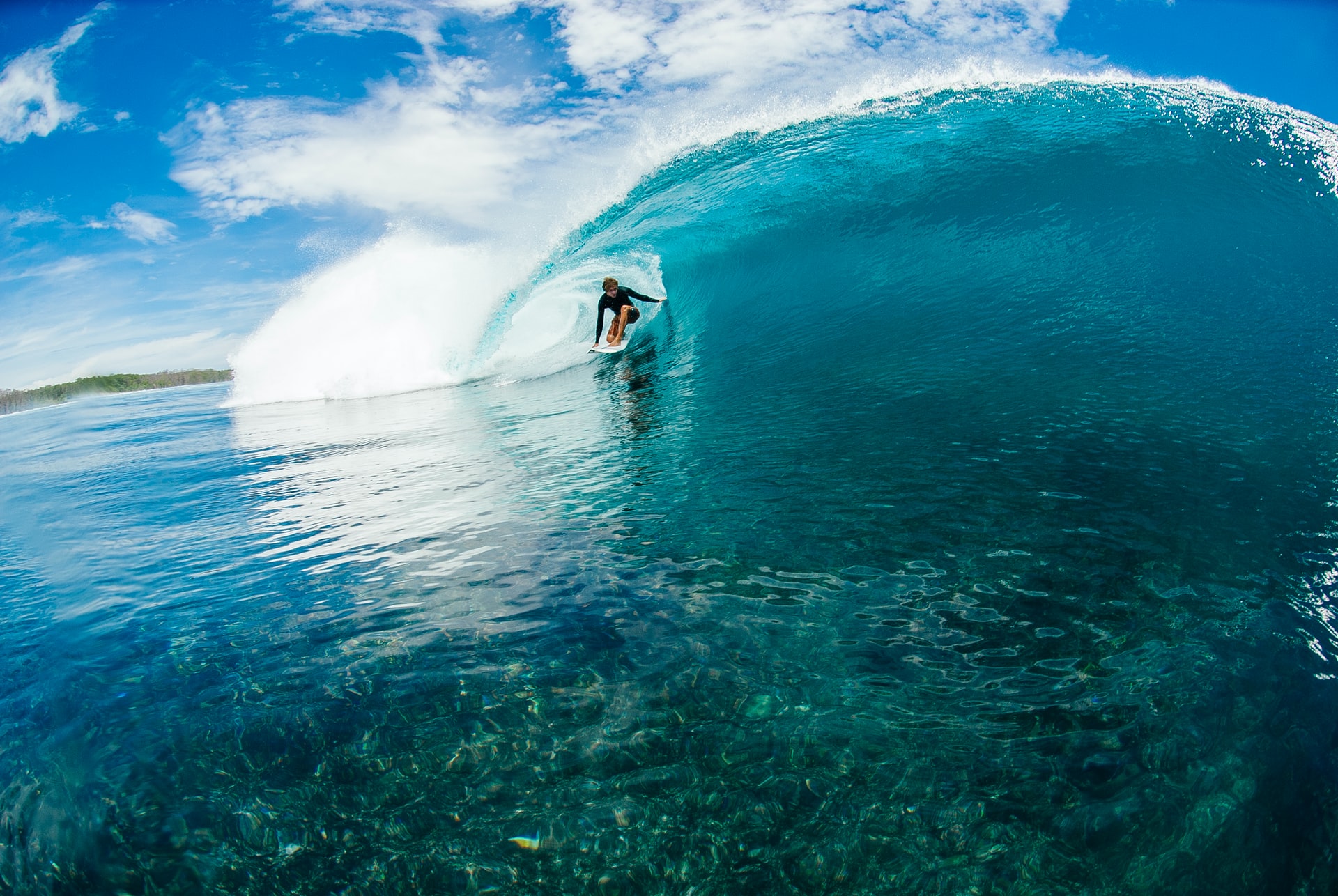
Do Surfers Ride Switchfoot? 5 Benefits (& Why You Should Learn It)
-

Do Surfers Shave Their Legs? 5 Common Reasons (+Pros & Cons)
-
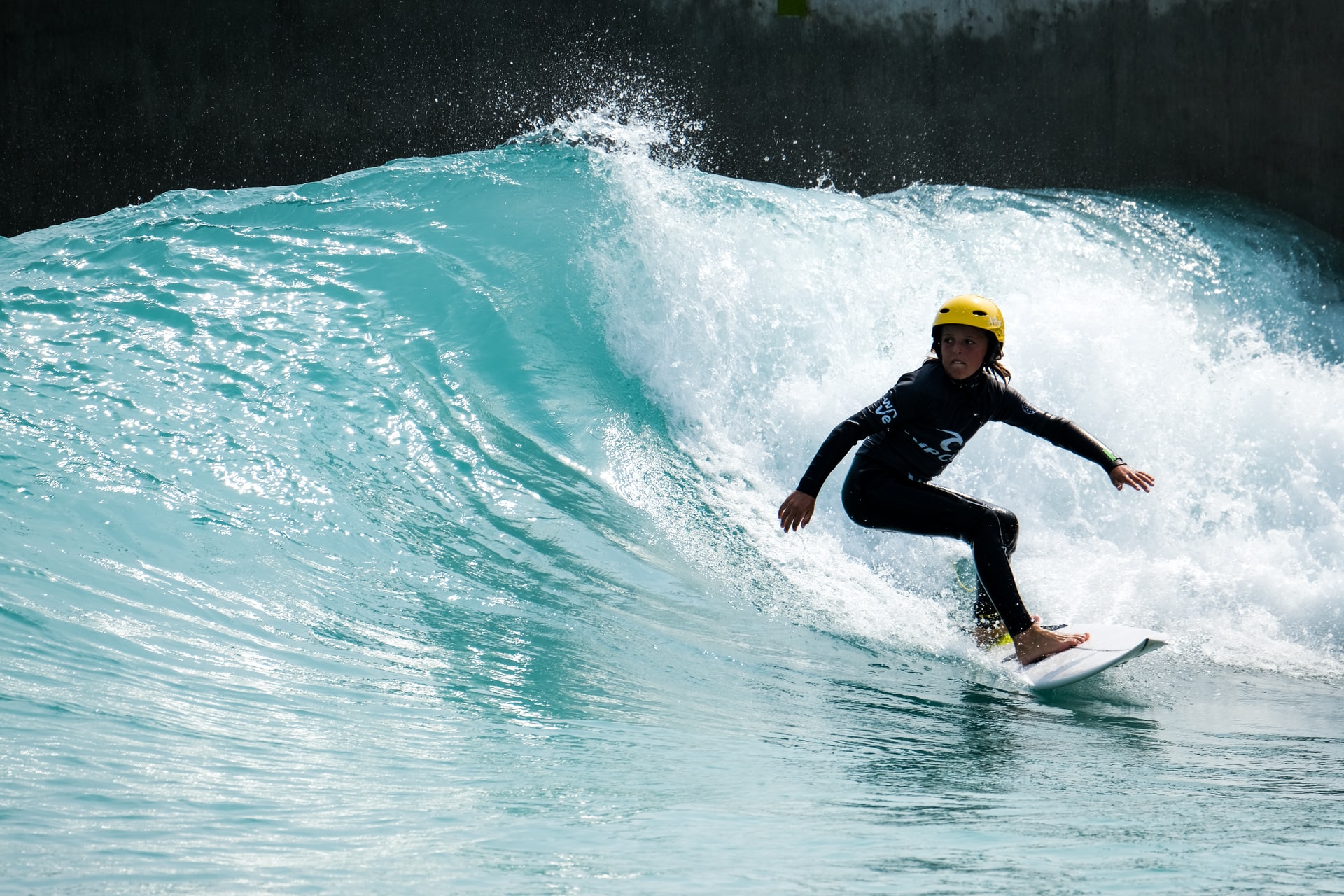
Do Surfers Wear Helmets? 8 Situations You Should Wear One (+4 Cons)
-
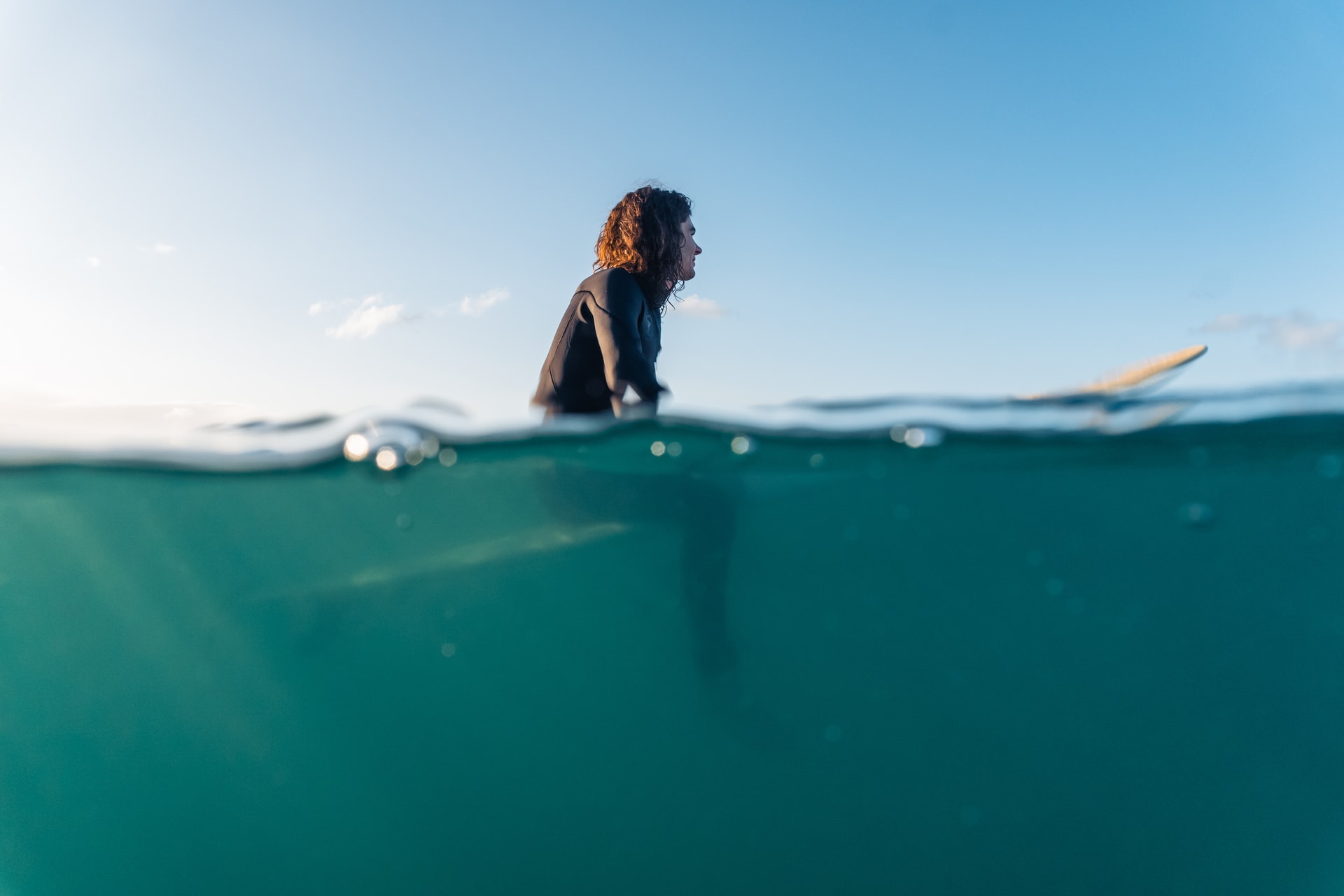
Do Surfers Poop in the Ocean? Myths & Facts (+5 Tips)
-
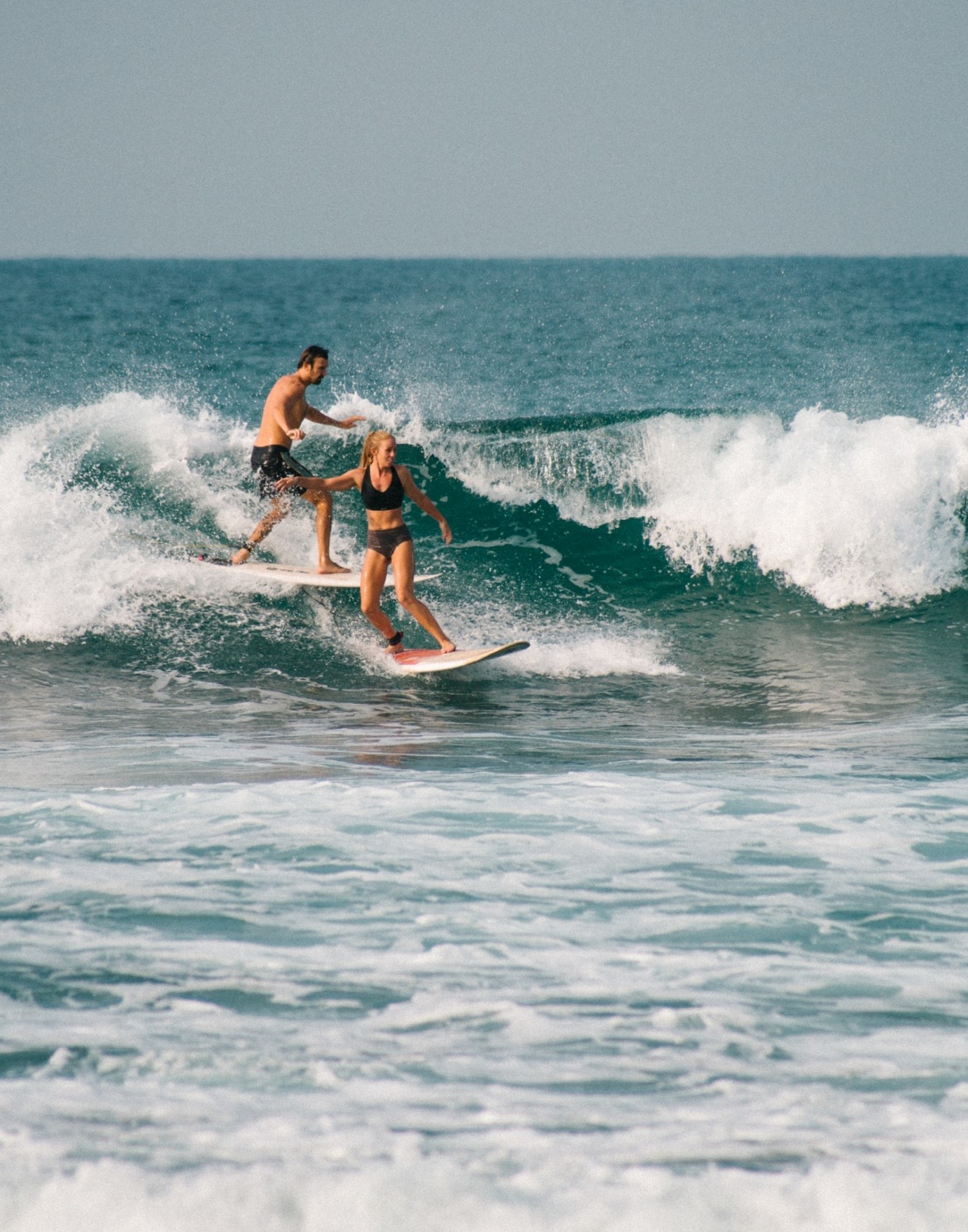
Do Surfers Run Into Each Other? 5 Common Reasons (+8 Tips)
-
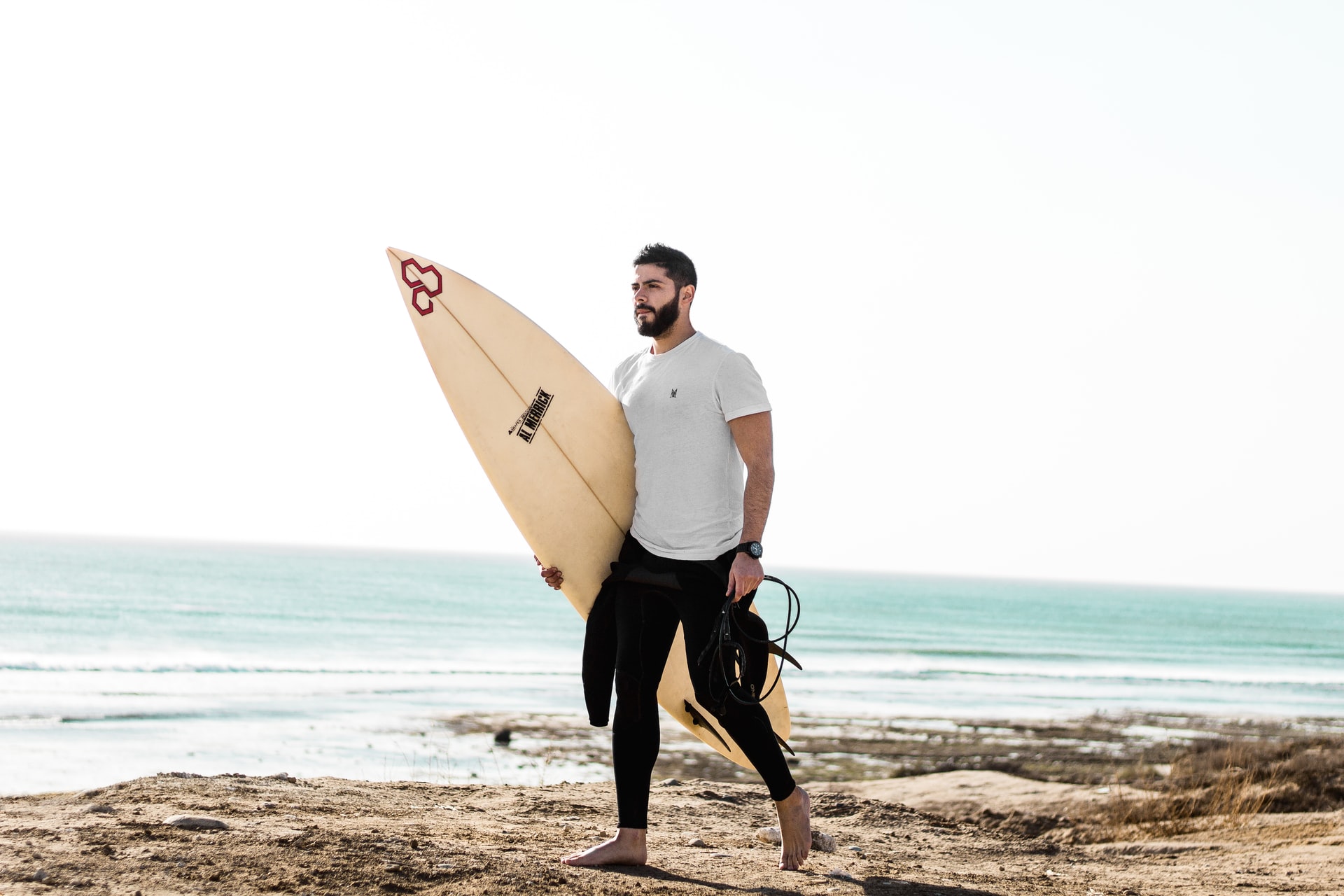
Do Surfers Have Beards? Pros & Cons You Should Know (+4 Tips)
-
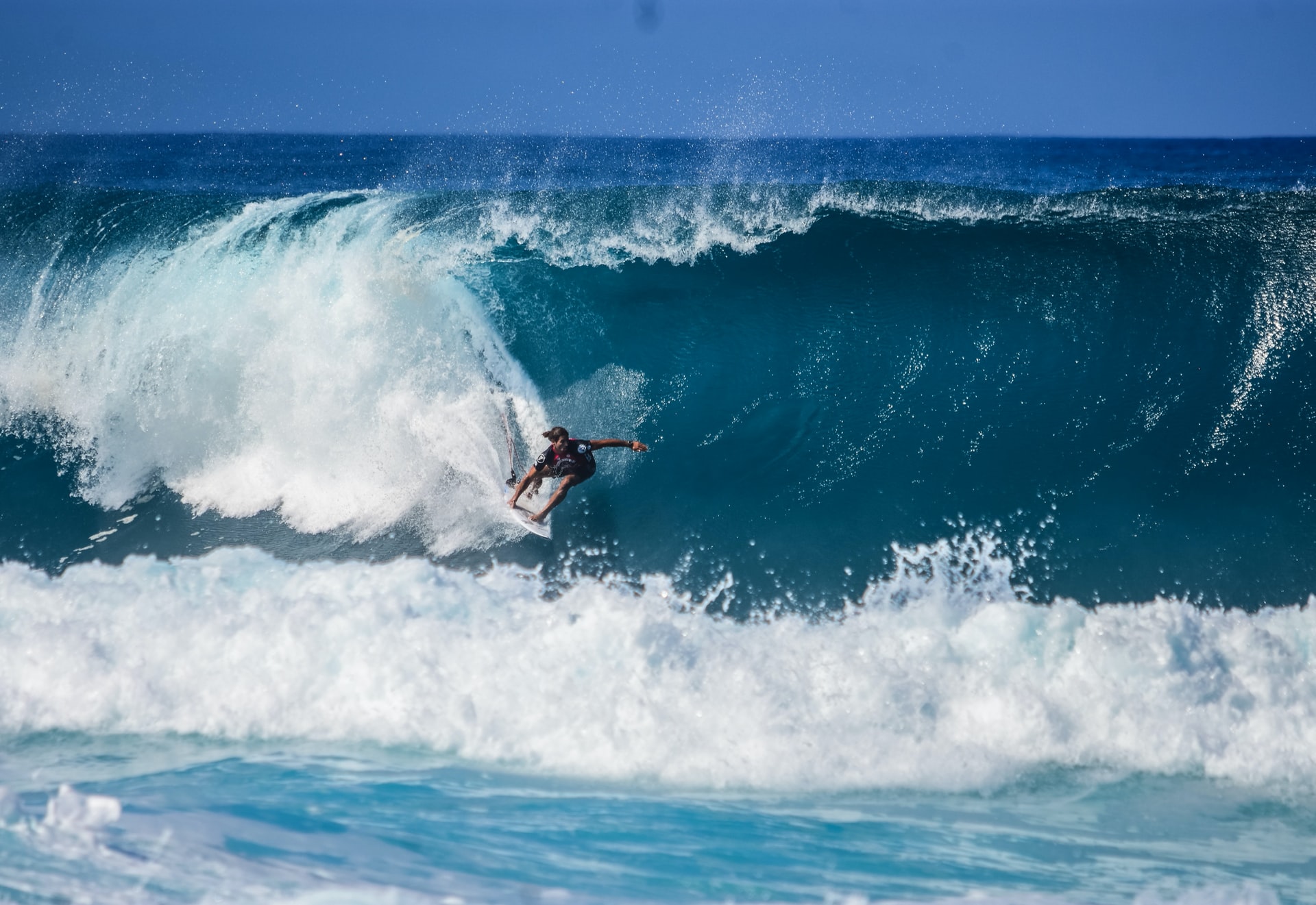
Do Surfers Like Constructive or Destructive Waves? (+Pros & Cons)
-
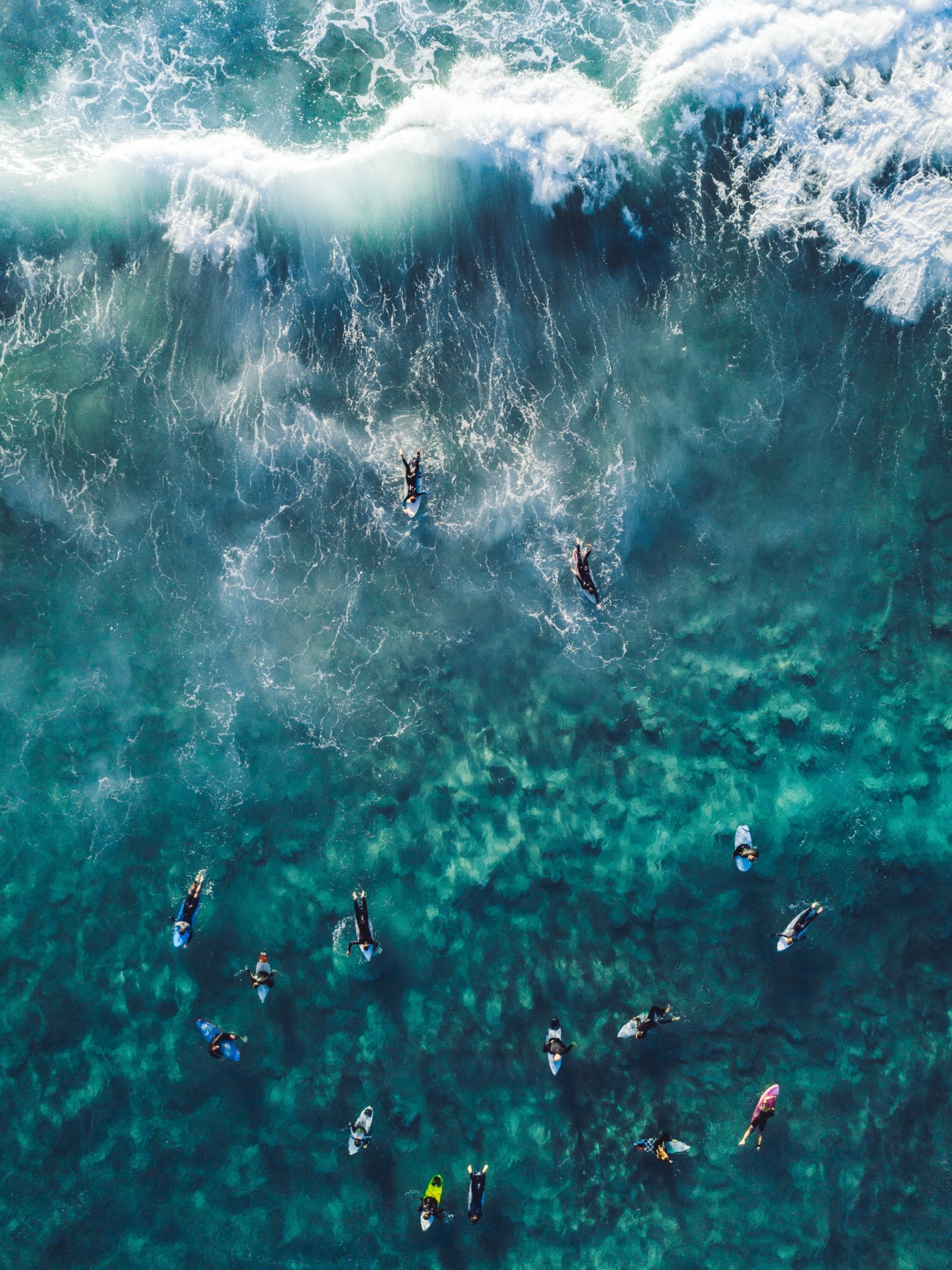
How to Surf Safely: 34 Crucial Tips (Every Surfer Should Know)
-
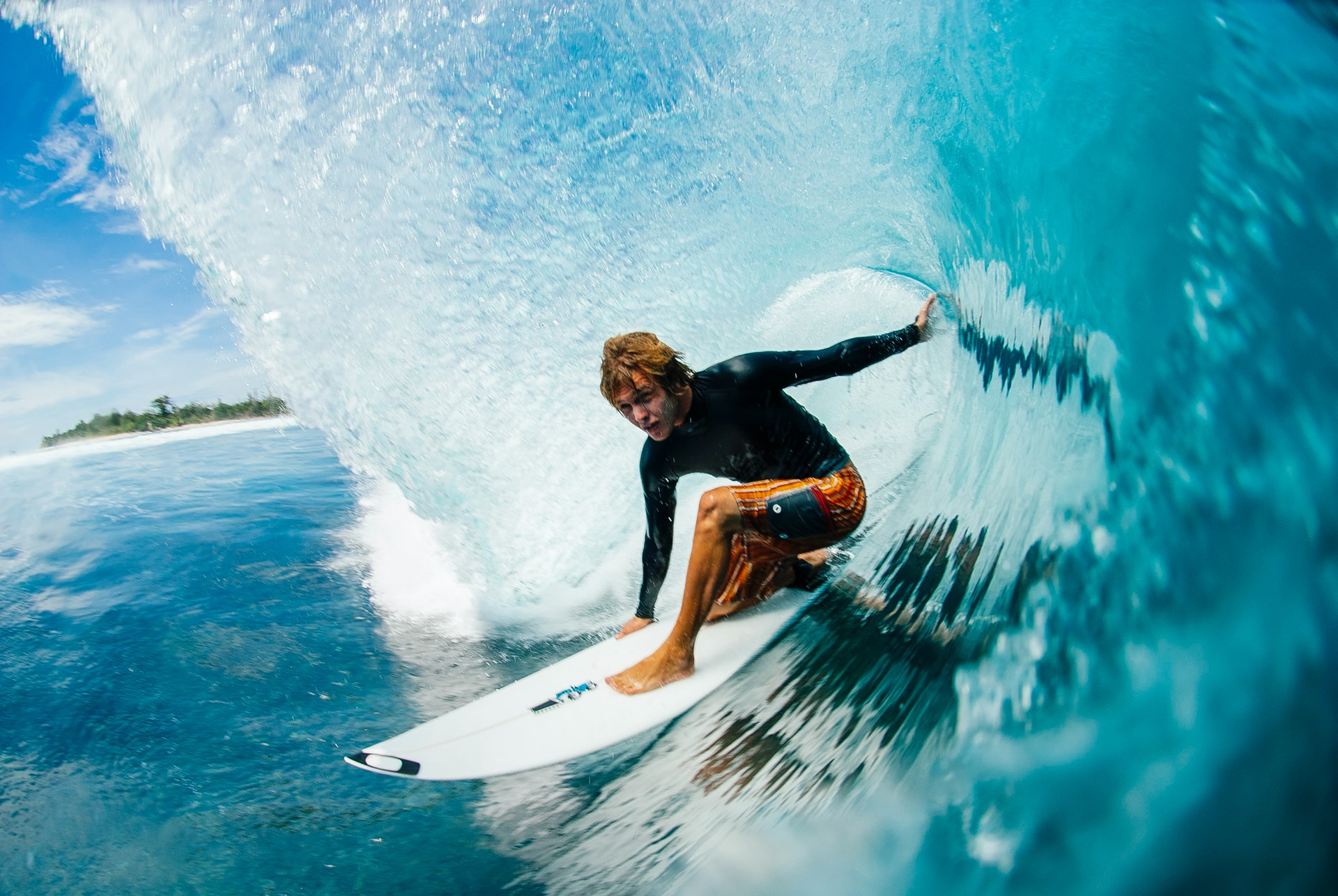
Do Pro Surfers Use Leashes? (+6 Reasons Why You Should Too)
-
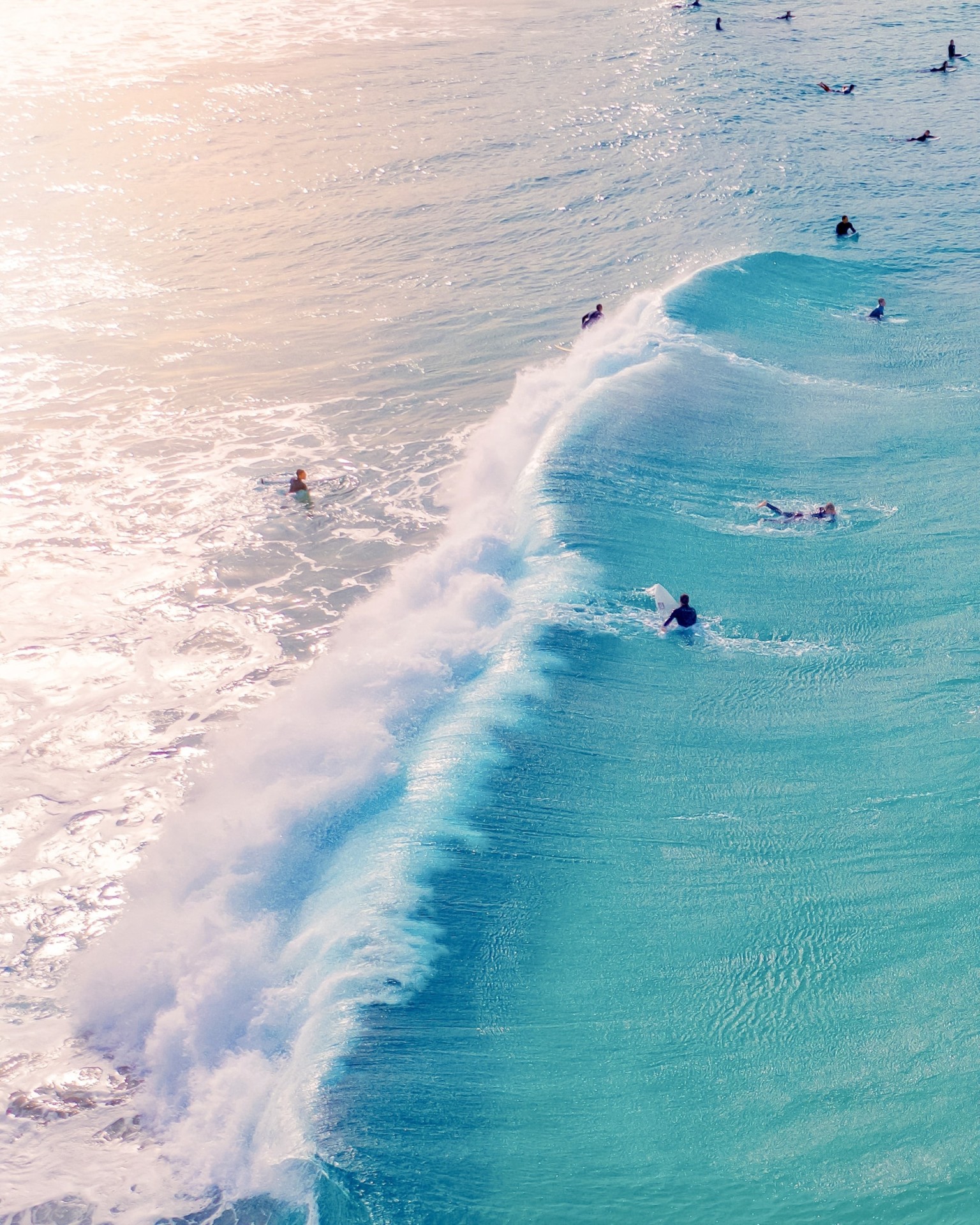
Do Many Surfers Drown? Here Are the Facts (+4 Common Reasons)
-
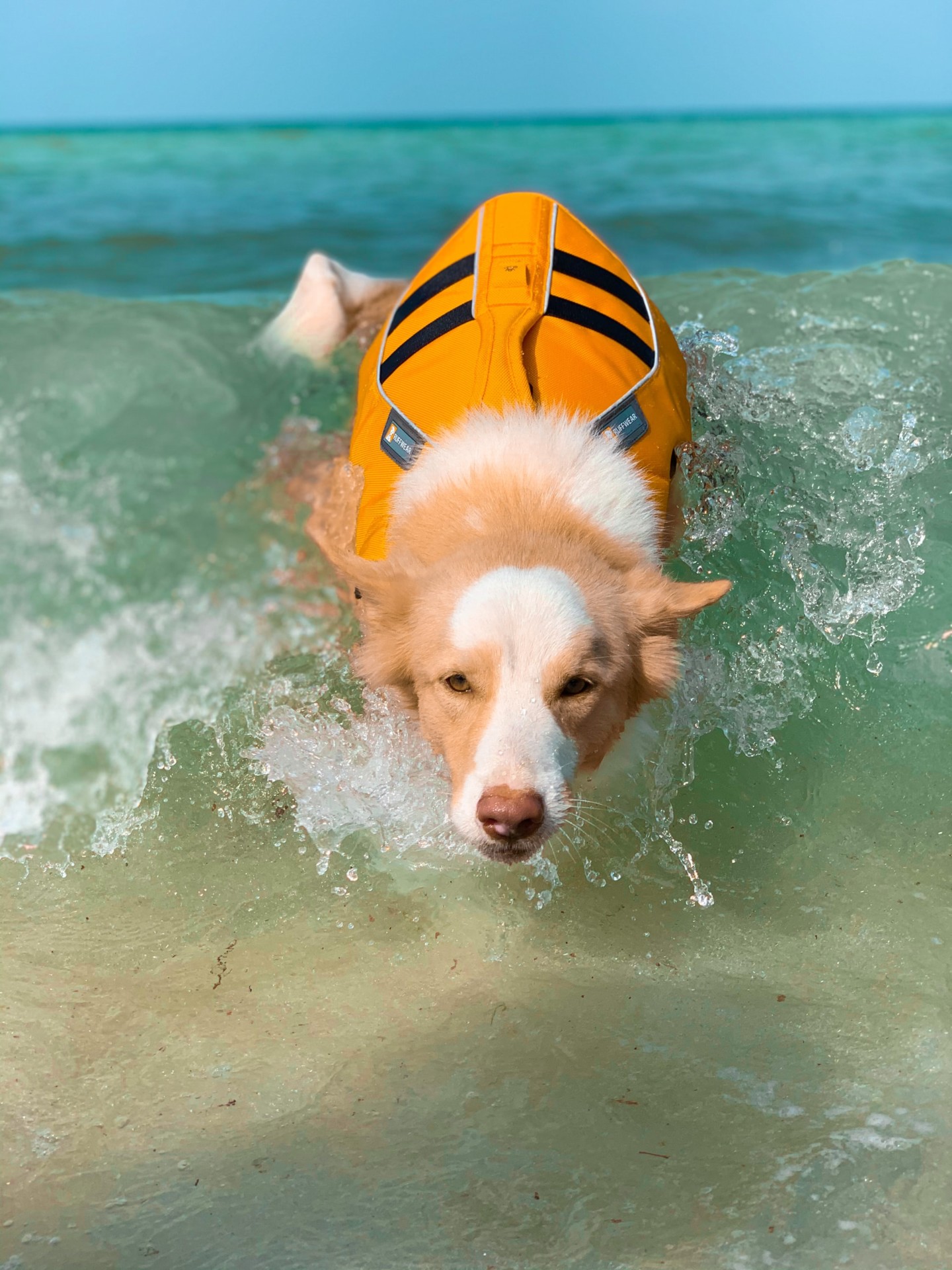
Do Surfers Wear Life Jackets? (7 Reasons Why They Don’t)
-
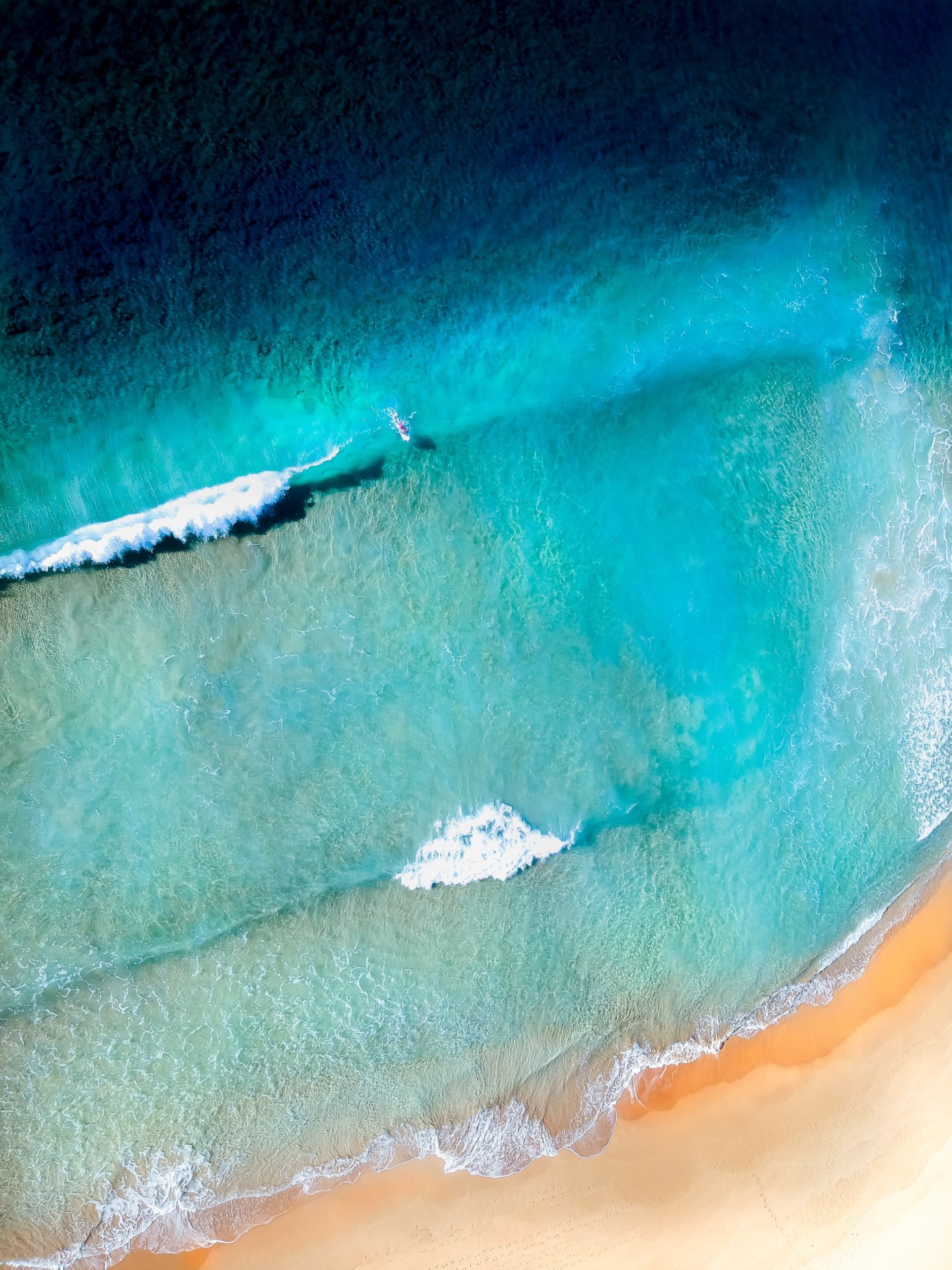
Do Surfers Like Rip Currents? (& How to Use Them Safely)

